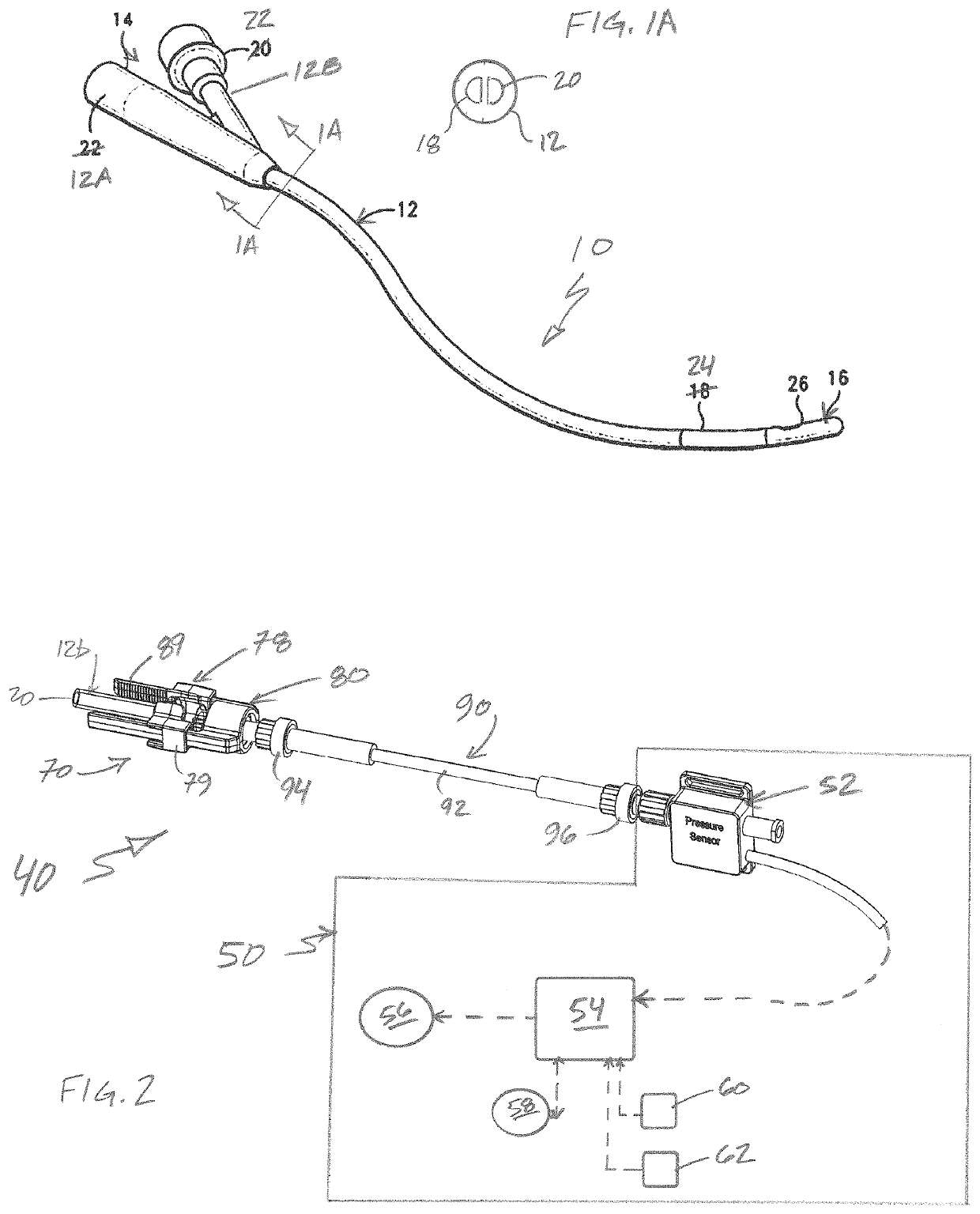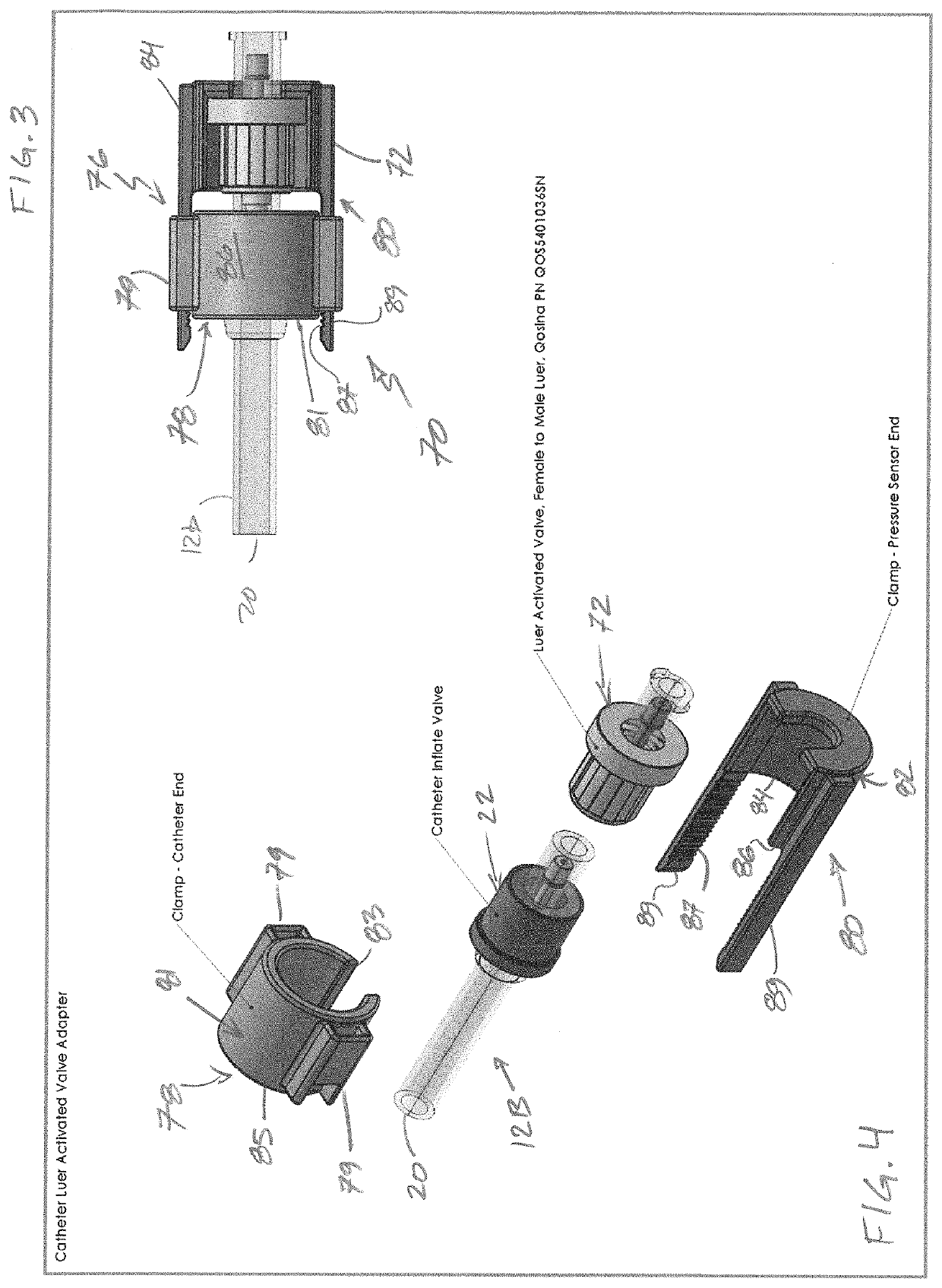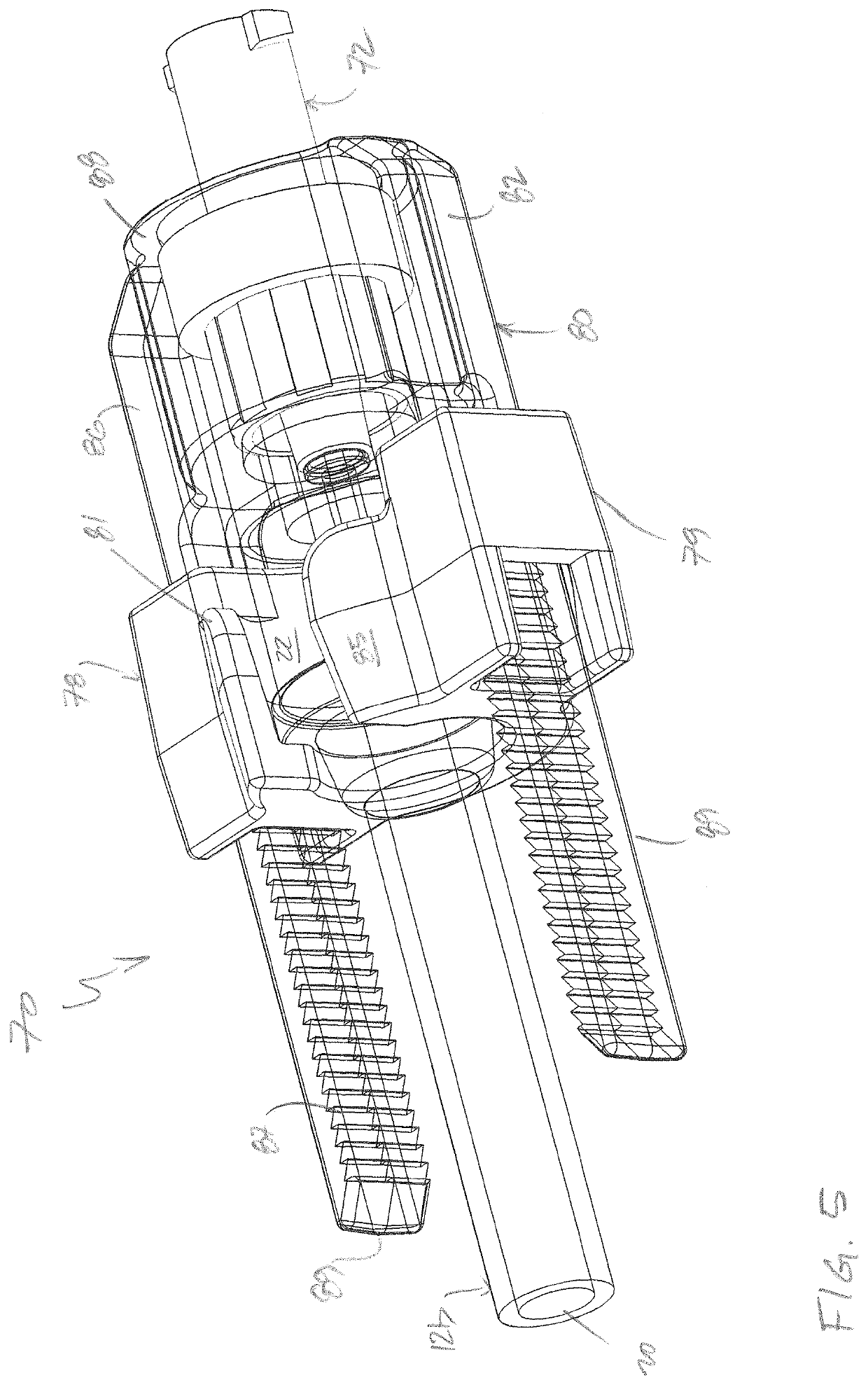Bladder storage anomaly assessment
a technology of anomalous storage and bladder, which is applied in the field of bladder storage anomaly assessment, can solve the problems of pain, bladder injury and/or reflux of urine through the ureters into the kidneys, long deployment, and inability to adequately empty the bladder
- Summary
- Abstract
- Description
- Claims
- Application Information
AI Technical Summary
Benefits of technology
Problems solved by technology
Method used
Image
Examples
Embodiment Construction
[0036]Preferred, non-limiting systems, kits, assemblies, structures and / or mechanisms relating to and enabling assessment of patient urodynamics are generally disclosed, presented and / or represented throughout the figures of the subject disclosure. An advantageous, non-limiting system is generally depicted in FIG. 2 for operative combination with the indwelling urinary catheter of FIG. 1. Several advantageous, non-limiting adaptor assemblies of the contemplated system are generally depicted in each of FIGS. 3, 5 & 6, with FIGS. 7-9 directed to particulars for / of select depicted assemblies. Finally, representative urodynamic test parameters are shown (FIG. 11) in furtherance of disclosure and discussion of improved bladder storage anomaly assessment, and a desire for “right time” removal of an indwelling urinary drainage catheter.
[0037]Advantageously, Applicant's diagnostic approach is directed to individuals (i.e., patients) that have been catheterized and are, at the time of assess...
PUM
 Login to View More
Login to View More Abstract
Description
Claims
Application Information
 Login to View More
Login to View More - R&D
- Intellectual Property
- Life Sciences
- Materials
- Tech Scout
- Unparalleled Data Quality
- Higher Quality Content
- 60% Fewer Hallucinations
Browse by: Latest US Patents, China's latest patents, Technical Efficacy Thesaurus, Application Domain, Technology Topic, Popular Technical Reports.
© 2025 PatSnap. All rights reserved.Legal|Privacy policy|Modern Slavery Act Transparency Statement|Sitemap|About US| Contact US: help@patsnap.com



